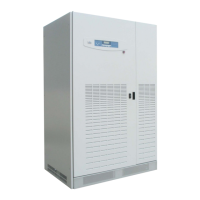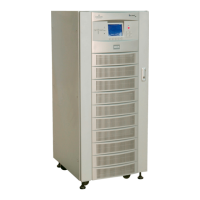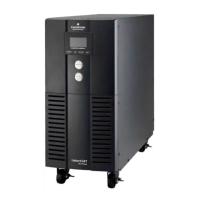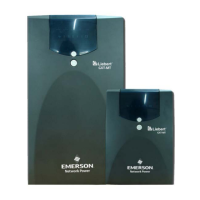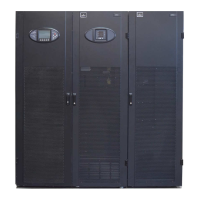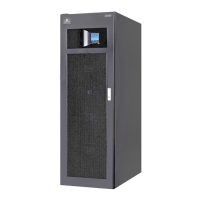Operation
65 Liebert
®
eXM
™
7.9 Auto Restart
When the main and bypass sources fail, the UPS draws power from the battery system to supply the
load until the batteries are depleted. When the UPS reaches its end of discharge (EOD) threshold, it
will shut down.
The UPS will automatically restart and enable output power:
• after utility power is restored
• if “Auto Recovery after EOD Enabling” is enabled in the UPS configuration (set by factory or by
Liebert Services)
• after the “Auto Recovery after EOD Delay Time” expires (the default delay is 10 minutes)
During the auto recovery delay, the Liebert eXM will be charging its batteries to provide a safety
margin for equipment shutdown if input power fails again.
If the “Auto Recovery after EOD Enabling” feature is disabled, the system must be restarted manually.
7.10 Reset After Shutdown for Emergency Stop (EPO Action) or Other Conditions
Once all appropriate measures have been taken to correct the problem indicated by the alarm
message appearing on the Operator Control Panel, carry out this procedure to restore the UPS to
regular operation following an EPO action or for the following reasons: Inverter Overtemperature,
Cut-Off Overload, Battery Overvoltage, excessive switching (BYP: XFER COUNT BLOCK), etc.
When the user confirms that the fault is cleared:
1. Press the FAULT CLEAR button to let the system exit the emergency off state.
2. Press the INVERTER ON button on the right side of the Operator Control Panel for longer than
2 seconds (after the rectifier has qualified).
After the EPO button is pressed, if the input utility is removed, the UPS will shut down completely.
When input utility is restored, the EPO condition will clear, and the UPS will enable the static bypass
and restore the output.
7.11 Battery Protection
7.11.1 Battery Undervoltage Warning
Before the end of discharge, the Liebert eXM displays a low battery warning. After this warning, the
battery has the capacity for 5 minutes discharging with full load (default time). The Liebert eXM can
be user-configured to display this warning from 3 to 60 minutes before end-of-discharge.
7.11.2 Battery End-of-Discharge (EOD) Protection
If the battery voltage is lower than the end-of-discharge voltage, the battery converter will be shut
down.
7.12 OperationStatic Bypass Switch
The circuit block labeled “Static Bypass” contains an electronically controlled switching circuit that
enables the critical load to be connected to either the inverter output or to a bypass power source via
the static bypass line. During normal system operation, the load is connected to the inverter and the
inverter contactor is closed; but in the event of a UPS overload or inverter failure, the load is
automatically transferred to the static bypass line.
To provide a clean (no-break) load transfer between the inverter output and static bypass line, the
static switch activates, connecting the load to bypass. To achieve this, the inverter output and bypass
supply must be fully synchronized during normal operating conditions. This is achieved through the
inverter control electronics, which make the inverter frequency track that of the static bypass supply,
provided that the bypass remains within an acceptable frequency window.
NOTE
The rectifier will start automatically 5 minutes after the of overtemperature fault is cleared.
NOTE
When the UPS is operating in static bypass mode or on maintenance bypass, the connected
equipment is not protected from power failures or surges and sags.
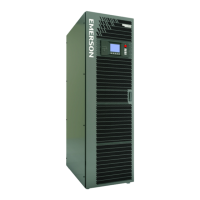
